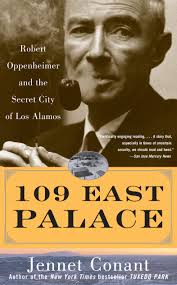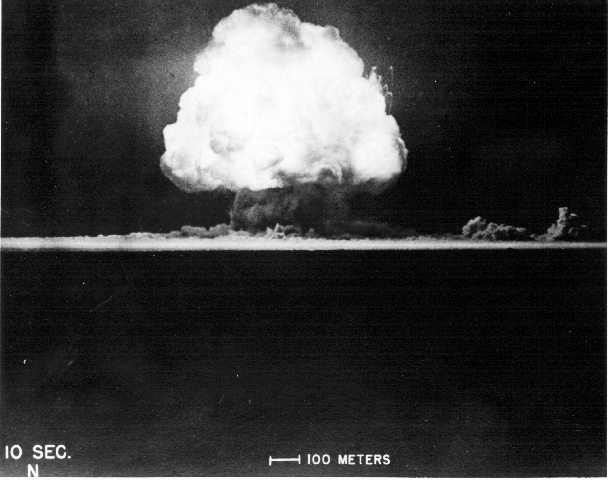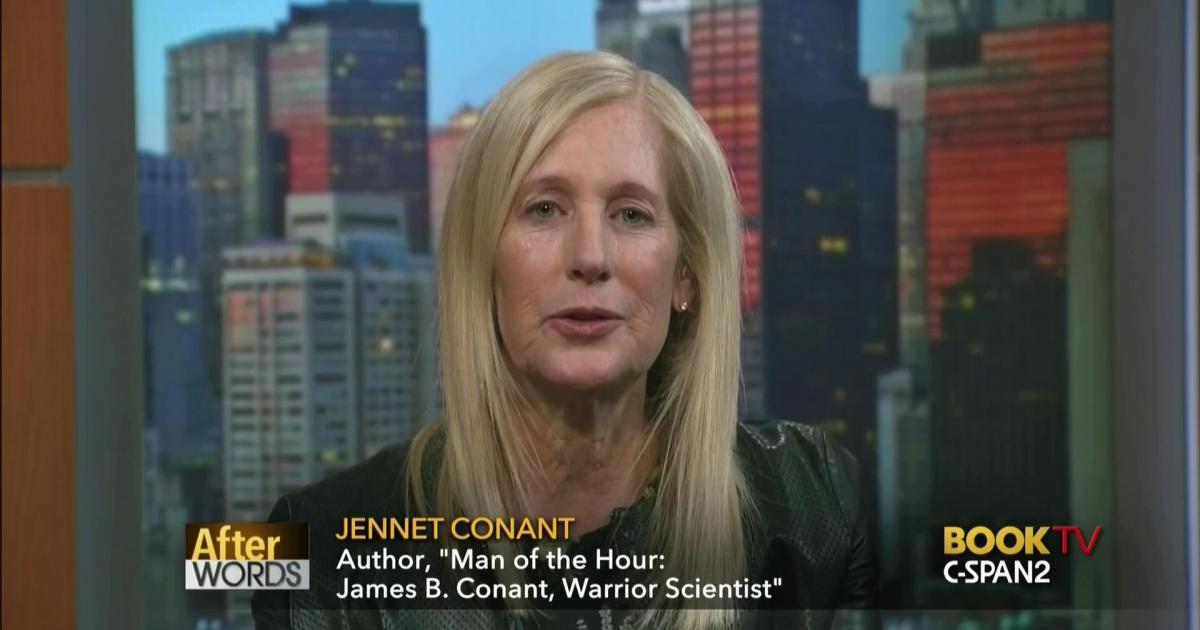Good Reads meta-data Rating: 4 from 1,234 votes. 425 pages.
Verdict: not the biography of Oppenheimer I was looking for.

The development of Atomic Bomb in twenty-seven months on a mesa in New Mexico is quite a story from theory to practice.
The book offers a near day-by-day account mostly of the administrivia of Los Alamos. Largely told through the subsequent recollections of the office manager of the project, located at 109 East Palace Street in Santa Fe, Dorothy McKibben, who adored Oppenheimer. In silence the author credits Dorothy with a remarkable and flawless memory for conversations because she recalled them years later without the benefit of diary or any other written record from the time.
Only 40% of the way through the book did this reader notice any discussion of the engineering, technical, and scientific endeavours. Apart from listening to complaints about laundry and indulging the pranks of immature minds, Oppenheimer never comes into focus in these pages despite his image on the cover and his name in the title.
These impressions are not helped by the slangy style of exposition and the credulity of the author who takes as fact whatever a favoured source said. This reader got no sense that any assertions were double checked. In addition, facts were scarce. I never did get an idea how big the operation was. Only more than half way through are some numbers mentioned, e.g., 3,000 but given the one-eyed perspective of the author I was unsure who was included in that number.
I said one-eyed because the author is always on the side of the scientists, say when they complained about secrecy and security and seems repeatedly to belittle both the GIs who built most of the set-up and the intelligence agents who censored the mail, kept strangers away, demanded to see passes, and so on.
The immaturity of many of the scientists involved is breath-taking, the more so later when some of the same individuals took it upon themselves later to pontificate about the use of the Bomb. Even the fraternity brothers paled at some of their antics. While some of these draft-exempt scientists were planning panty-raids, in 1944 the Pentagon was sending 2000 yellow telegrams a day to mothers and wives.
Most of the Europeans on the project were more serious because Naziism was a reality to them, and not a newsreel. Indeed so focused were they on Germany that when the war ended in Europe many wanted to quit the project. They had so quarrel with Japan since it had no bomb and no prospect of one. Their goal was to get to the Bomb before the Naziis did.
At this point Oppenheimer was, it seems, crucial in motivating them to work ever harder, far from quitting. That he did this is, however, not explained by anything in his nature or character developed earlier in the book. Yet it was certainly crucial and he was the one who did it. We did get earlier the grudging admission by one of his many critics that Oppenheimer, despite his dilettantish pre-war mien, had proven adept at getting all those (egotistical) scientists to talk to each other. No mean feat that. More exposition of how that was managed would be welcome.
There are many assertions that Oppenheimer was attractive to women, that he had blue eyes, and a confident manner. So what? There are many of these and none of them built the bomb. There had to be more than these superficial descriptions to explain his singular achievements as noted in the paragraph above. Using the word ‘charisma’ is neither analysis nor explanation.
Oppenheimer is the centre of the book, even if he is seldom on the page. His own disregard of security is numbing. Why did he do those things that later would look so damning? My own conclusion is hubris. In the first instance Oppenheimer was sure, because he was so much smarter than everyone else, he would never make a mistake and give anything away, no matter to whom he talked. Second, he was likewise sure he would always be able to talk his way out of suspicion. So he thought.
Instead he simply called attention to himself again and again, and it stuck. And he created a pattern that was at best reckless and at worst sinister.
That a skilled intelligence agent could learn much from what is not said, or from the lies told, these are tricks of the spy trade that Oppenheimer never considered, since his hubris meant he never thought anyone else could out think him.
His hubris had another strand. After the war, he could have gone back to Cal and time might have healed some of the wounds, but instead he haunted Washington, putting himself forward as Mr. Atom, advocating committees, and himself as a member. He was hard to miss. He had come to view himself as indispensable. Maybe he was, but the effect, given the two strands already mentioned, was to make himself into a target. He seems always to think he was an invulnerable Achilles.
While the author mocks the efforts of the security officers with the fact that they missed Klaus Fuchs, who was indeed passing information to Them, she seems to fail to see that the security officers were right. There were leaks. Fuchs, by the way, was not the only source of leaks but the most well placed.
Nor does the author indicate any effort at ascertaining, say by visiting the National Archives, whether German agents were active in the matter. Still less other Soviet agents who monitored Oppenheimer when he was away, as was often, from Los Alamos.
The drama accelerates quickly in the middle of the book, and we read less about bickering, picnicking, and laundry, when it is time to test Trinity.
 The Trinity test at 10 seconds after detonation.
The Trinity test at 10 seconds after detonation.
Though here, as always, is a squabble about the name which is dutifully recorded by the author.
Yet she sits on the fence about the use of the bomb. She quotes estimates of causalities of the projected November 1946 invasion of Japan and then in a rare footnote says this figure might have been fabricated. That is quite an accusation to make in a throwaway footnote. It is a fact, by the way, that the Pentagon planners had begun preparations for 500,000 American casualties from an invasion of Japan. It had also contracted for 10,000 yellow telegrams a day.
What president would not use the bomb in preference to such a toll?
Given the many uncertainties involved with the Bomb, the only way to go was to use it. Why? What demonstration would convince the Japanese? Blow up an uninhabited island? Not likely to be convincing. They would suspect a trick. That the Bomb would even work was always in doubt. If it did not work on the island, then it would serve no purpose but waste the weapon and do so in a way that nothing could be learned from the failure. And a failed demonstration would queer the pitch for another demonstration.
Moreover, the weapons grade uranium was so scarce and hard to use that wasting a Bomb on an island might mean another one was not available for some time. Furthermore transporting the Bomb to the Pacific was hard. The cruiser USS Indianapolis that delivered the first Bomb was sunk by a Japanese submarine a few days after completing that mission. (See ‘Jaws’ [1975] for confirmation.) Would the next ship transporting a bomb be sunk with it on board?
The prospect of besieging Japan into surrender was considered and rejected on many grounds. The Soviet Union would nibble away at Japanese weaknesses, while leaving the hard work to the United States. Little material support would come from a depleted England. The Chinese would turn full-time to fighting among themselves. During a prolonged siege the young, the women, and the civilians would suffer most as scarce resources would go to the defence forces. The result would be to cripple Japan for a generation or more without discrediting or displacing the war party.
Douglas McArthur always preferred manoeuvre and surprise to direct attacks, but he saw no other way in 1945.
The zealots in Japan were ready to fight on, and the example of Okinawa frightened everyone in the Pentagon. They would fight to the death unless the Emperor ordered them not to do so. To get to that order, the zealots had to be completely undermined. Hence the first big bang. It was made all the more dramatic for being a single aircraft. Japanese air defence spotted it but did not respond to its approach, assuming it was photographic reconnaissance.
In the two-day interval allowed for the Japanese to assess the destruction of Hiroshima, we now know what was unknown in D.C. at the time, that there was an abortive coup d’état, but it came to nothing. The second bomb, by the way, was not targeted on Nagasaki but bad weather took it there.
Back to the book in hand, the author seems to relish name dropping, as if everyone associated with a notable university is somehow a superior person. I could only put this down to an ingrained snobbery. This attitude shows also in the way those who were not blessed with such illustrious associations are portrayed. General Lesley Groves is one example. He, more often than not, is portrayed just one step away from Groucho Marx. Yet he oversaw an unprecedented and wide-spread effort of which Los Alamos was only a part, but he gets barely any credit, until, perhaps at the urging of editor, some condescending good words are applied toward the end. But overall the tone is, how could this nobody criticise these men from prestigious universities. Yes, Groves had an MIT degree, but he was but a student there, and in those days, by the way, MIT did not have the caché it does now, partly thanks to graduates like Groves.
Yet the text shows he was right about many things, like the irresponsibility of some of the scientists, about the need for secrecy, about the dubious nature of the undertaking, about the subsequent need to explain and justify everything done, and even the spies. More importantly, that he stuck by Oppenheimer as the right man for the job even though he did not like him.
The author has an admirable list of titles on related subjects.

So be it. Not for me. Reading this book but confirms my cynicism about the world of New York City publishing.
Skip to content
